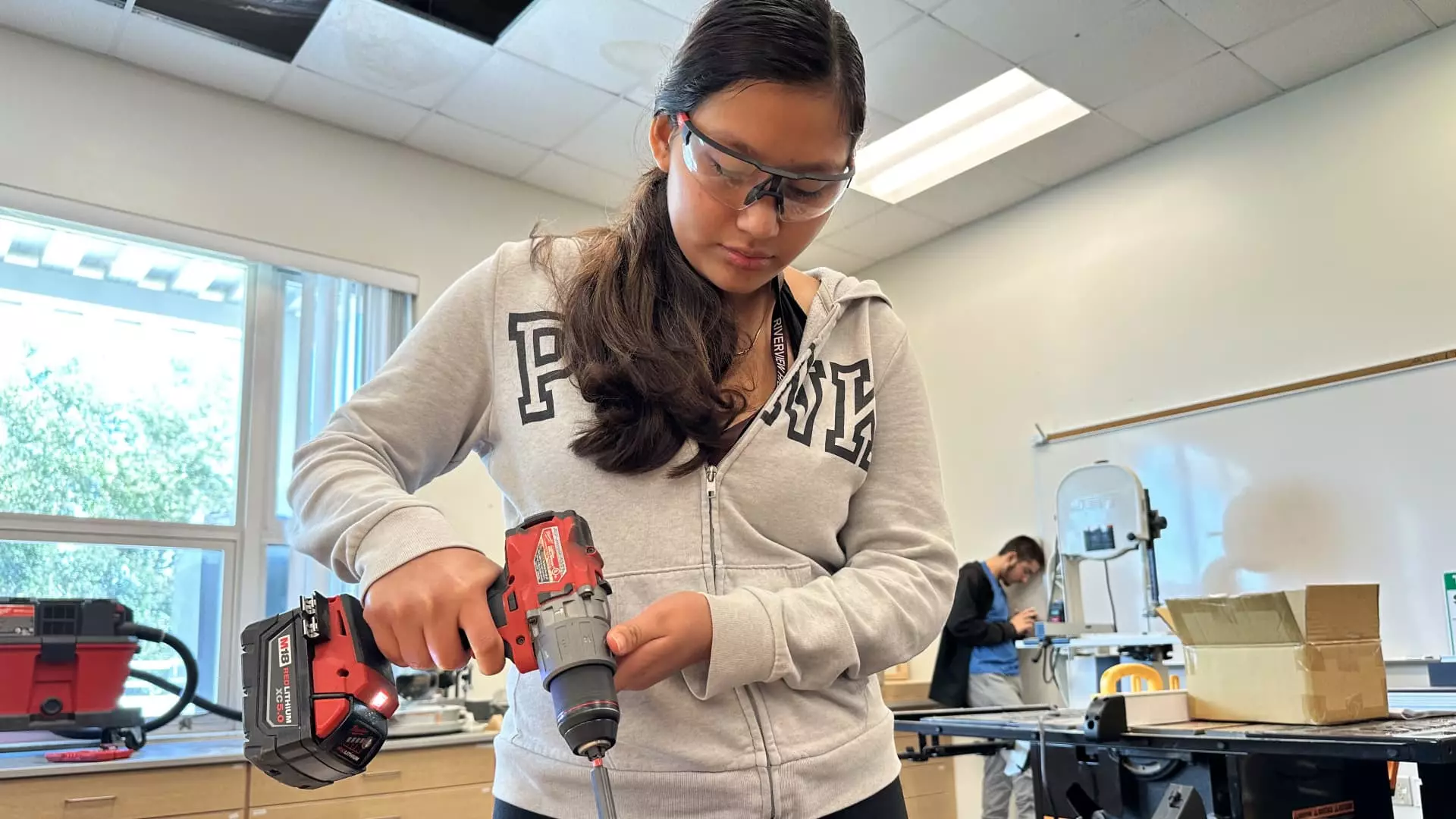As the landscape of education and employment evolves, the traditional perceptions of career pathways are shifting dramatically. For many students today, conventional four-year college degrees are no longer seen as the only route to success. Instead, vocational education programs are gaining prominent recognition as valuable alternatives, offering equitable opportunities in skilled trades. This transition is perhaps best illustrated through the experiences of students like Angela Ramirez-Riojas, an 18-year-old high school senior, who reflects a broader movement among her peers.
Angela’s journey paints a vivid picture of this shift. Influenced by her grandfather’s work in construction, she has developed a passion for hands-on trades. “I’ve gone with him to work,” she states, emphasizing the respect she holds for his skill and expertise. Engaging with his work not only inspired her but also highlighted an important societal change; vocational pathways are increasingly becoming preferred routes for students who prioritize immediate employment opportunities over lengthy education. Angela represents a growing demographic of young men and women who recognize that a traditional college degree isn’t the only, or necessarily the best, option for achieving financial stability and personal fulfillment.
Educational institutions have begun responding to this shift by implementing more vocational programs, such as the construction academy at Riverview High School in Florida. Launched three years ago, this initiative was designed specifically to equip students like Angela with practical skills that cater directly to job market demands. Principal Erin Haughey has noted the increasing desire among students to stay within their communities while pursuing fulfilling trade careers. With limited class sizes and heightened demand, it’s clear that students recognize the potential value of vocational training. Classes in carpentry, plumbing, and electrical work not only offer certification but also open doors to various specialized career paths, creating opportunities for upward mobility that have historically been underappreciated.
The rising emphasis on vocational education also seeks to address a critical skills gap in the labor market. As the construction industry grapples with an acute shortage of skilled workers, the ripple effects extend far beyond mere employment; they affect economic growth and community development. The need for more than half a million construction workers in the immediate future underscores the urgency of empowering young people with the training and skills they need to succeed. In this regard, the Riverview program serves both individual aspirations and broader economic objectives, establishing itself as a vital resource for local industry needs.
As parallel trends unfold, vocational trades have begun to demonstrate competitive salary prospects compared to traditional white-collar jobs. With a median salary for new construction hires reaching $48,089—outpacing the average new hire in professional services—it is becoming increasingly clear that skilled labor can offer financial rewards that were once thought to be exclusive to professional degrees. Financial expert Ted Jenkin emphasizes that this is a straightforward case of supply and demand. As more students conclude that practical experience outweighs theoretical education, career confidence in vocational fields continues to rise.
Survey data reveals sweeping changes in educational attitudes among high school students. The notion that a four-year degree is a universal prerequisite for success is declining. Instead, nearly half of students believe that vocational training, community college, or direct work experience is adequate for their career aspirations. Many even express a preference for learning through real-world applications over engaging in traditional degree programs. The term ‘toolbelt generation’ coined by Jenkin aptly captures this cultural shift, highlighting a developing cohort that regards vocational careers as legitimate and rewarding avenues to success.
The contemporary shift from a predominately four-year college-focused education to incorporating vocational training reflects a growing recognition of diverse career pathways. This transformation offers not only immediate benefits for students but also long-term economic advantages for industries in need of skilled workers. As vocational programs become more integrated into the educational fabric, there remains extensive potential for these initiatives to empower the next generation. Providing alternatives to conventional academia not only reinforces the value of skill-based professions but also opens new horizons for ambitious and driven young individuals seeking their rightful place in today’s economy.
As the narrative of success evolves, it reinforces the message that vocational education deserves its place in the mainstream conversation on career planning, positioning itself as a commendable plan A for students across the nation.

